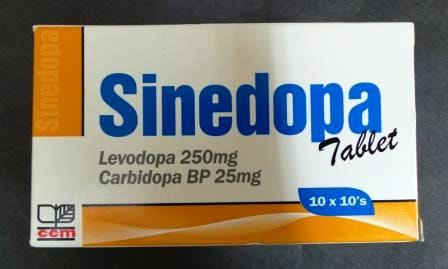|
Pharmacology - Levodopa / Carbidopa
Carbidopa and Levodopa are both anti-parkinsonian medications. Method of Operation The conversion of levodopa to dopamine through decarboxylation brings back part of the activity in the nigrostriatal pathway. Carbidopa is able to prevent the decarboxylation of levodopa outside of the brain, which enables the use of lower doses and reduces the peripheral adverse effects of dopamine, such as postural hypotension. Oral admin. The drug levodopa When combined with carbidopa, the half-life will be between one and two hours. Use in Clinical Settings Parkinson's disease treatment is based on this fundamental factor. The administration of levodopa typically involves the use of a peripheral DOPA decarboxylase inhibitor. The treatment is more effective against stiffness and akinesia than it is against tremor. In a period ranging from a few months to a few years, effectiveness decreases. Adverse Effects Anorexia, nausea, and vomiting are all symptoms. Postural hypotension is caused by. Syndrome similar to schizophrenia that is acute. Confusion, anxiety, disorientation, and insomnia or nightmares are all symptoms of this condition. Dyskinesia, which occurs in the majority of patients after two years, and 'on-off' effects, which are characterized by fast swings between dyskinesia and hypokinesia/rigidity, are the consequences that develop more slowly.
0 Comments
Leave a Reply. |
Kembara XtraFacts about medicine and its subtopic such as anatomy, physiology, biochemistry, pharmacology, medicine, pediatrics, psychiatry, obstetrics and gynecology and surgery. Categories
All
|


 RSS Feed
RSS Feed
